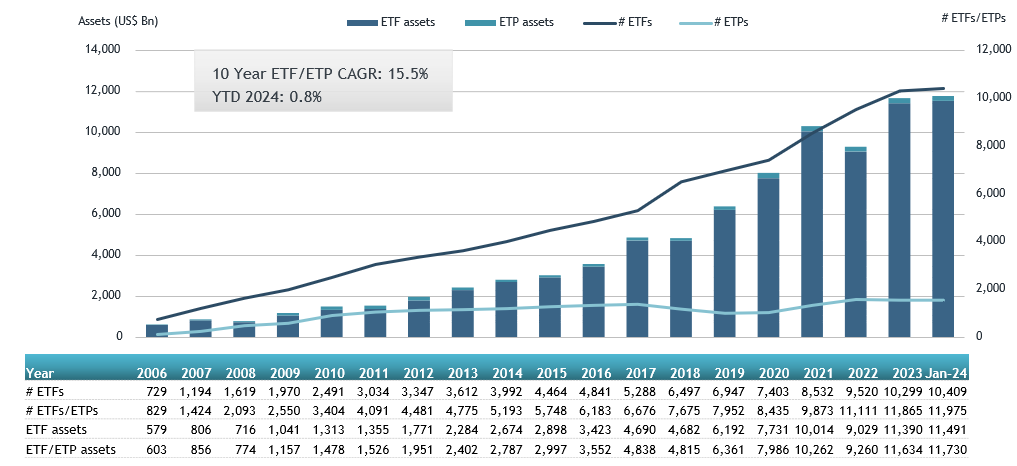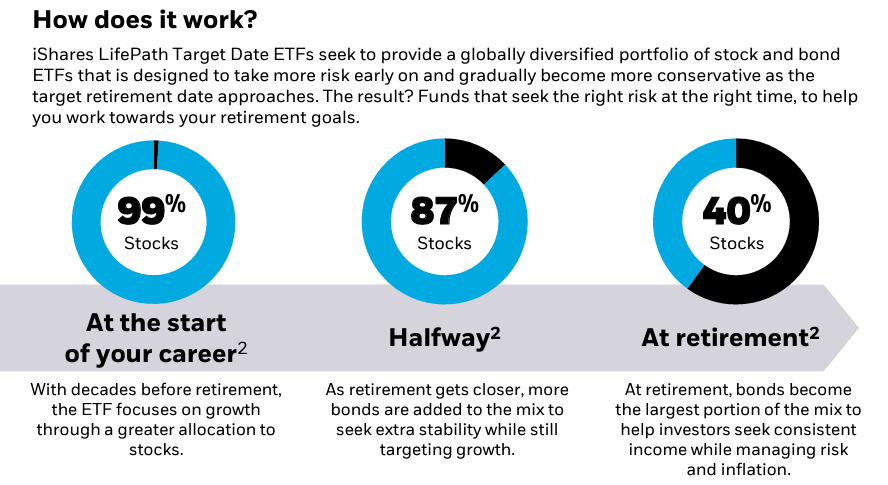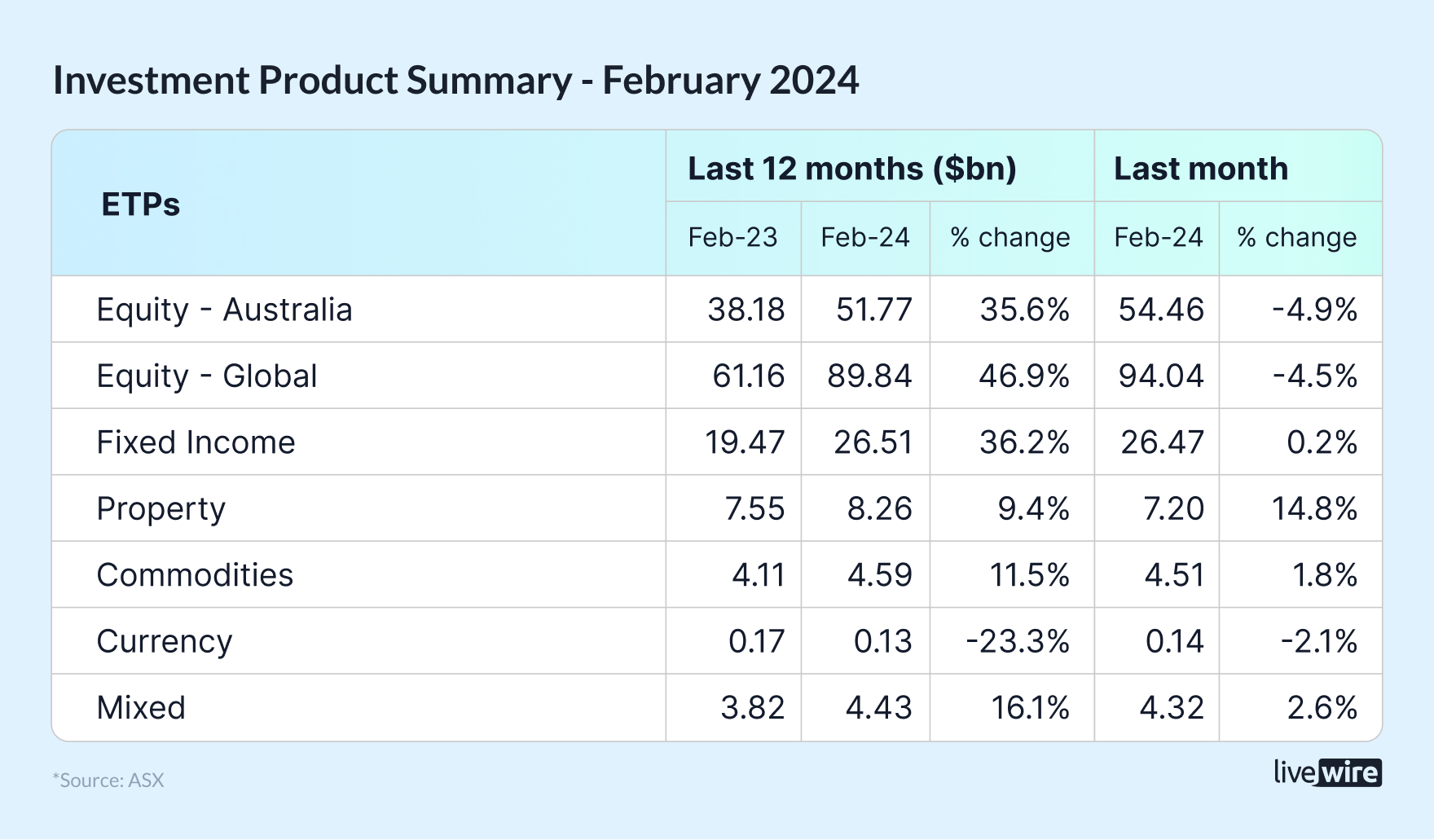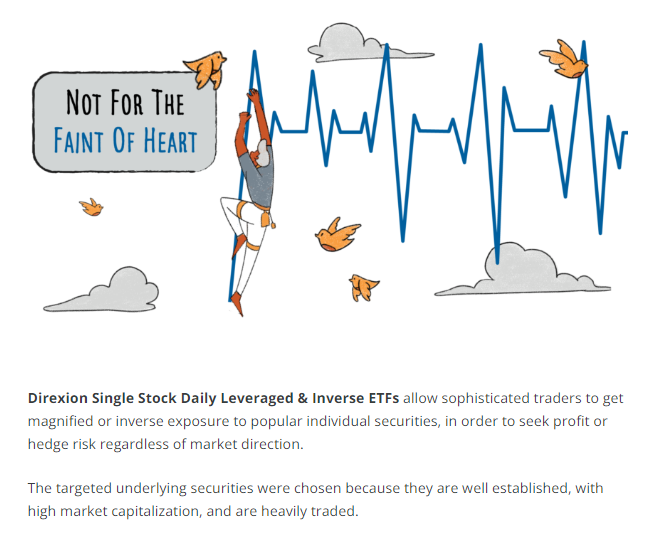A glimpse into the future: ETFs in Australia and what it means for you
The exchange-traded funds (ETF) market in Australia has amassed a fervent following, and with good reason. These products have revolutionised how many of us access markets, manage our asset allocation, and lower investment costs.
But despite Australia's ~350 available products, we still lag behind the expansive offerings in other parts of the world.
In this wire, we delve into the gap in between our market and the rest of the world with Deborah Fuhr, co-founder of ETFGI, one of the foremost authorities on ETF trends. Fuhr provides insights on the next wave of ETFs poised to hit Australia and how they may reshape the way you invest.
So whether you're a retail investor, SMSF, adviser, robo-adviser, or institutional investor, grab some popcorn and get ready to feast your eyes on the future of the industry.
Current landscape of Australian ETFs in a global context
To understand the trajectory of Australia's ETF market over the next 5-10 years, it's worth taking a moment to grasp the current landscape with some quick stats:
- The ASX ETF market has $185 billion in funds under management (FUM) as of February 2024, a stark contrast to less than $10 billion a decade ago (ASX).
- There are currently 331 ETFs listed (ASX).
- Over 2 million investors in Australia now hold ETFs in their portfolio (Betashares).
- In comparison, the global ETF industry had US$11.63 trillion in FUM at the end of 2023, with nearly 12,000 products across 81 exchanges in 63 countries (ETFGI).

Australia's ETF market might seem small in size, but its rate of growth is very impressive. Fuhr points out the key reasons behind this: a strong general awareness of investing, the shift from active to passive, and more advisers giving the nod to ETFs.
"You've also got issuers like Betashares, Vanguard, BlackRock, and a growing number of robo-advisors providing good tools, education, and platforms for buying ETFs," she says.
What’s coming down the pipeline in Australia?
With over 300 ETFs listed on the ASX, one might think there's something for everyone, right?
While there's certainly robust variety in the domestic market, it's akin to comparing Sydney to New York; Sydney is undoubtedly fantastic, but the Big Apple takes it to the next level with its sheer abundance of choice and peculiarities.
Fuhr takes us through this wealth of choice and gives us her take on what we can expect to see crop up in Australia over the coming years.
Expect more crypto ETFs
With Bitcoin recently cracking a record US$70,000, the North American and European markets are seeing a surge in products, notably led by BlackRock, focused on cryptocurrencies and Blockchain-related assets.
While Australia has been swift to respond, with the likes of the Betashares’ Crypto Innovators ETF (ASX: CRYP), GlobalX’s 21Shares Bitcoin (ASX:EBTC) and 21Shares Ethereum ETFs (ASX:EETH), other markets are innovating at warp speed.
For instance:
- Euronext offers the 21Shares Crypto Basket 10 ETP, exposing investors to a basket of the top 10 cryptocurrencies, including lesser-known names like Solana, Cardano, Tron, and XRP.
- In Canada, Horizons ETFs introduced the BetaPro Inverse Bitcoin ETF, unique globally for allowing investors to profit from Bitcoin's decline.
"While Australia has shown a more measured approach compared to other regions in adopting crypto ETFs, I anticipate a strong uptick in local interest, particularly as domestic providers ramp up marketing efforts and expand product offerings, and as more investors see what’s happening with Bitcoin," Fuhr says.
Emergence of retirement ETFs
Diversified or 'multi-asset' ETFs are gaining traction in Australia, with products like the Vanguard Diversified High Growth Index ETF (ASX: VDHG) and the Betashares Diversified All Growth ETF (ASX: DHHF) offering convenient, all-in-one solutions for growth-minded investors.
However, these options can still leave investors with the task of managing their asset allocation as they age and their risk tolerance, comfort with volatility, and circumstances evolve.
Acknowledging this challenge, providers such as BlackRock in the US are leading the way in introducing "target date" funds in an ETF format.
“We're witnessing the emergence of ETFs tied to specific retirement dates, such as 2050, where the issuer will adjust that fund’s asset allocation from growth to balanced and conservative as the target date approaches, aligning with investors' changing risk profiles. I anticipate similar innovations being tailored for the Australian market,” Fuhr says.

Bond ETFs for high yields and proper cash flow planning
Rising interest rates have rekindled investor interest in fixed income investing, evident in the rising popularity of bond ETFs.
With the Australian 10-year yield at around 4% and corporate bonds offering even higher returns, bonds have regained appeal for investors seeking income and a shock absorber against volatility.

If the yield makes sense, they will come
For Australian investors, Fuhr expects it will always be a competitive decision to allocate capital towards domestic shares for their juicy franked dividends versus bonds, but other issuers have managed to crack the code to appeal to investors with the right offering.
“There was a Chinese debt ETF being listed in Singapore and at the time it was the largest listing in Singapore, worth a US$1 billion at the time, and is being used by family offices, wealth funds, and that’s because it made sense to those local investors from a yield perspective,” she says, referring to the ICBC CSOP FTSE Chinese Government Bond Index ETF in 2020.
Single bond and maturity-date ETFs to enhance cash flow planning
A notable drawback of fixed income ETFs in Australia is that they don’t mature. Unlike investing in fixed income directly, where investors receive repayment upon maturity, bonds in ETFs are continually refreshed. This poses a challenge for investors aiming to manage cash flow, while direct fixed interest remains hard to access.
That’s where the US and Canada are making strides by introducing ETFs that invest in individual fixed income securities, and funds that pay out capital and wind-up when their underlying bonds mature.
"This is particularly advantageous for retirement planning or conservative investors who seek to map out their investment duration and earnings, with the assurance of receiving their investment payout at maturity," Fuhr explains.
“Australian ETF issuers will start to look at this and I believe it will be particularly relevant for strategies used by SMSFs and advisers.”

Image: An excerpt from Royal Bank of Canada’s ‘Target Maturity’ ETF series
Thematic ETFs to offer more precise exposures
The ASX has seen a rise in thematic as well as smart beta ETF admissions over the years. Fuhr predicts this trend will continue as savvy investors seek to exploit certain opportunities and trends.
While the 2010s primarily saw the emergence of largely equity-based products focused on various technology themes, markets such as China and India, along with strategies targeting value, growth, and ethically-screened companies, the next generation of products will be more precise and diverse in asset class coverage.
Recent launches exemplify this evolution, including the VanEck Global Listed Private Credit (ASX: LEND), Global X Uranium ETF (ASX:ATOM), and the iShares MSCI World ex Australia Momentum ETF (ASX:IMTM).
“If you look at global flows, thematic ETFs attract a relatively higher proportion of inflows in Asia-Pacific than Europe or the US. So I think different thematics will continue to resonate and we’ll see issuers go deeper into the opportunity set,” she says.
Active ETFs will keep booming
Recently, Macquarie Asset Management, Fidelity, and Claremont have entered Australia's active ETF space, a trend Fuhr expects to continue. She notes investors are increasingly seeking a broader range of active options coupled with the convenience of the listed experience.
"Australians have been early adopters of the barbell approach to investing," she says.
"They’ll pursue active strategies where they believe they can outperform, whether through direct investments in stocks or funds. However, when active options are limited, they’ll turn to passive strategies and the idea is they’re leveraging all available tools to generate alpha.”
Expect more alternative funds, and possibly some weird ETFs
While Australian investors are likely to prioritise traditional asset classes for core investments, certain types of products are gaining traction within the satellite components of portfolios.
- Covered call ETFs: Fuhr believes that covered call ETFs will attract income-oriented investors seeking consistent returns. "Covered Call ETFs offer a unique strategy for generating income by selling call options, providing investors with regular cash flow while potentially mitigating downside risk in volatile markets,” Fuhr says.
- Alternatives ETFs: Alternatives ETFs will continue to gain traction as investors aim to diversify sources of return and lower portfolio volatility, and the ASX can expect to see different offerings within infrastructure, commodities, and real estate.
- Single Stock ETFs: In a quintessentially "only in America" moment within the ETF industry, Direxion has introduced ETFs centered on high-momentum single stocks. These ETFs allow investors to take long or short positions on companies like Nvidia, Apple, and Amazon with substantial leverage. But will they be welcomed here? Fuhr says: "In the end, investors have access to trading CFDs, and there will always be pockets of the market seeking products like this as long as there’s appropriate disclosures. It wouldn't be surprising to see these types of ETFs making their way into Australia eventually.”

The role of supporting participants
While product innovation and investor demand will be key drivers of growth in the ETF space, market participants like robo-advisors and brokers are likely to be strong tailwinds for the industry as well because of the roles they play in education, marketing, and execution. And that’s expected to become a trend here too.
"In the US, robo-advisors are becoming the unsung heroes of guiding individuals into the market for the very first time," Fuhr says.
"These platforms offer a hybrid model, allowing clients to access both human assistance and convenient chat features on websites. The ability to seek advice, create a tailored asset allocation using a robo solution, and execute trades via ETFs is proving very effective for those people scared to take the leap into investing.”
In North America and Europe, it's standard practice for brokers to provide a curated selection of 'commission-free' ETFs. "This approach effectively targets investors entering the market or those predominantly focused on ETF portfolios. It's good for the investor because they’re not paying any brokerage on ETF trades,” Fuhr says.
While the likes of CommSec and nabtrade don’t offer zero-brokerage ETFs, Fuhr notes that the Betashares Direct and Vanguard Personal Investor platforms are trying to fill the void of services that make buying and selling ETFs free or relatively cheaper.
Exciting times ahead for investors
Comparing Australia's ETF market journey to a test cricket match, Fuhr says we're still in the early innings, with plenty of innovation and potential yet to be tapped.
"During my visits to Sydney with Morgan Stanley and BlackRock, I was struck by how quickly Australian investors across the spectrum - super, institutional, and retail - embraced ETFs,” she says.
“That general awareness and sophistication in how investors are using ETFs will mean that you’ll continue to see significant innovation on the ASX to meet the rising demand for diverse investment choices and strategies.”
2 stocks mentioned
2 funds mentioned


